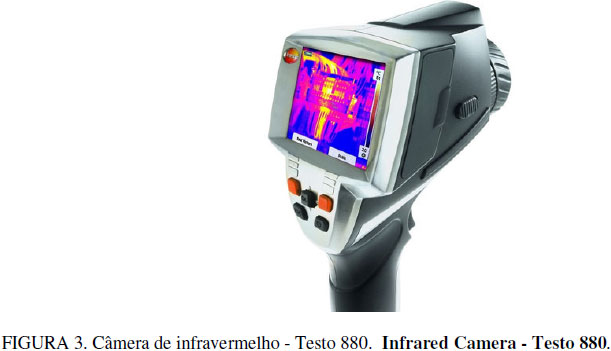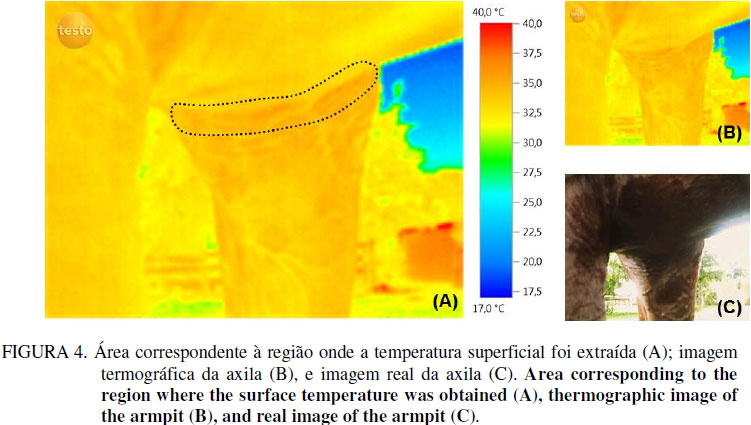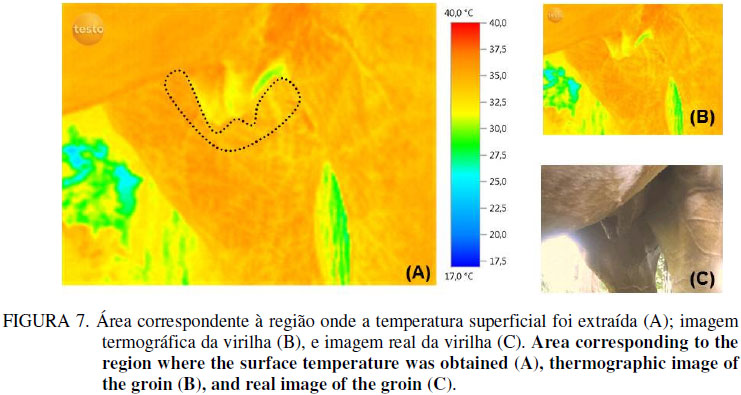Heat-regulation mechanisms, such as changes in peripheral blood flow, are activated by thermal stress to maintain body homeostasis. The infrared thermography enables to identify changes in blood flow and it has been valuable for recognizing stress in animals. This research aimed to evaluate the use of infrared thermography in the training horse thermoregulation. An Anglo-Arab horse was studied and exercised once a day. Infrared thermography images of horse´s armpit, croup, breast and groin and physiological parameters were taken before and after exercise and 0, 5 and 10 minutes after shower for eight days. The air temperature, relative humidity and air velocity were also registered. There were no differences between the surface temperature of croup and breast and the treatments, implying low participation in thermoregulation. However, the armpit and groin temperature increased after the exercise and decreased after shower, suggesting that vasomotor mechanisms were activated to heat exchange. Similar results were found for physiological parameters which show organism thermal responses for heat loss. It was concluded that infrared thermography allowed accuracy in determining the horse body surface temperature and it was possible to infer on thermoregulation.
equine; thermal stress; physiological parameters; surface temperature








